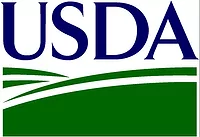Innovating the Pesticide Workflow
Internationally, food safety organizations are struggling to meet a wide variety of new pesticide-monitoring regulations as food sources and markets become more globally diverse. Governments and trade organizations are increasing the number of pesticides that must be screened for and lowering maximum residue limits (MRLs), leaving food producers scrambling to respond.
International regulations on MRLs of pesticides in food now cover hundreds of individual components—Japan’s MRL list has over 800 compounds—at levels down to 10 ppb. Meeting the expanded new requirements has forced food safety teams to address a variety of new technical and budget issues by turning to chromatography/mass spectrometry instruments to run multi-residue methods.
However, the multi-residue method has complications as well. More than 500 regulated pesticides can be analyzed by gas chromatography/mass spectrometry (GC/MS), while a larger group is covered by liquid chromatography/MS (LC/MS) methods. Both those solutions share several challenges including:
• Reducing the matrix effect on method performance
• Meeting analytical figures of merit for new regulations and standards
• Increasing throughput to accommodate higher workloads
• Streamlining the method, data collection and reporting workflow
Thermo Fisher Scientific can help food safety professionals face these challenges with its new TraceFinder™ software, a platform that can run both LC and GC triple-stage quadrupole mass spectrometry instruments. TraceFinder offers a unified workflow for GC and LC analysis, giving labs the flexibility to confidently analyze and report thousands of residues.
These integrated solutions are ideal for multi-residue, simultaneous targeted screening, confirmation, and quantitation.
Precise, Versatile and Robust Quantitation
Triple-stage quadrupole detection technology coupled with chromatography offers improved throughput, confidence and reduced cost-per-analysis, making it a powerful tool for food safety testing. This detector technology measures the mass of target molecules and their unique reaction ions for both quantitation and residue identity confirmation.
Both the new Thermo Scientific TSQ Quantum Access MAX triple-stage quadrupole mass spectrometer for LC-MS and the Thermo Scientific TSQ Quantum GC triple-stage quadrupole for GC-MS are based on the proven Thermo Scientific TSQ detection platform.
Shared are several features that provide higher sensitivity and lower detection limits, making them well suited for regulated environments like food safety. We created an LC-MS/MS method to screen for 250 pesticides (500 timed SRMs) in a crop extract at 1- and 10-ppb levels.
Simplified Workflow
TraceFinder software can run either the LC or GC triple-quadrupole instruments and was designed specifically to serve novice users in the food testing industry. Its menu of preconfigured methods and report formats simplifies routine contaminant screening, helping laboratories meet increasingly stringent monitoring requirements and boost productivity.
To create a method for targeted screening and quantitation, users simply choose the test, build the sample list, choose the report options and submit the samples for analysis. Users access the built-in selective reaction monitoring (SRM) library and choose the chromatography/mass spectrometry conditions to create the desired method.
Reduced Matrix Effects
SRM is the primary technique used with a triple-stage quadrupole mass spectrometer for quantitative analysis. However, selection of a precursor ion at a normal unit (1 amu) resolution often suffers chemical noise interferences from endogenous biological and environmental matrices.
Only the TSQ Series LC/MS and the TSQ Quantum GC offer increased resolution using Highly Selective Reaction Monitoring (H-SRM). By removing isobaric chemical noise, H-SRM increases signal-to-noise (S/N), improving limits of quantitation and providing higher-confidence results. H-SRM also reduces the possibility of false positives, even in heavy matrix, without sacrificing sensitivity.
Increased Productivity
More regulated residues and lower MRLs have made high-throughput analysis critical to ensuring that testing processes do not slow production levels.
For LC analysis, the Thermo Scientific Accela chromatographic system provides seamless operation spanning conventional LC pressures up to 15,000 psi for rapid (2- to 10-minute) separations of complex mixtures. The Thermo Scientific TRACE GC Ultra uses a full range of detectors and injectors that can increase sample throughput by 30 times without compromising precision.
Simultaneous Quantitation and Confirmation
The Thermo Scientific Quantitation-Enhanced Data-Dependent MS/MS (QED-MS/MS) scan function increases throughput by providing simultaneous quantitation and structural confirmation.
The acquired QED-MS/MS data can be subsequently searched against a built-in library of well-known contaminants for further structural confirmation.
Conclusion
TraceFinder software, coupled with TSQ technology, enables users to seamlessly combine LC and GC analysis of residues to meet any food testing need for quantitation.
www.thermo.com/lowmrl
Looking for quick answers on food safety topics?
Try Ask FSM, our new smart AI search tool.
Ask FSM →








.webp?t=1721343192)